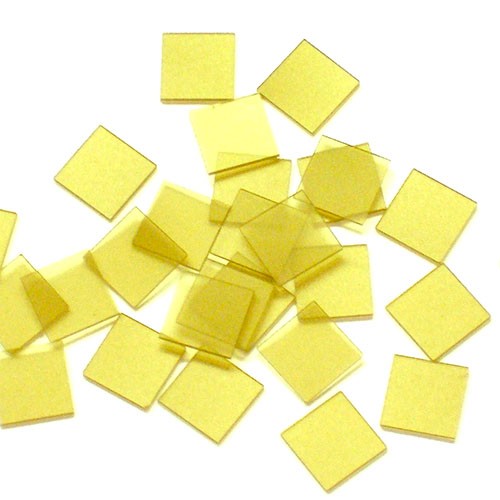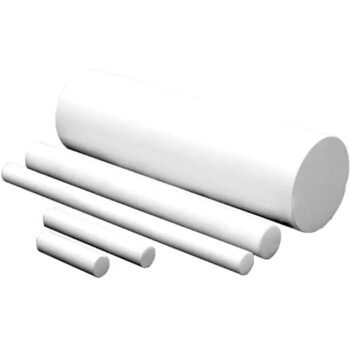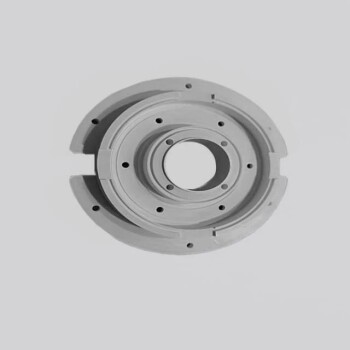
CVD materials
CVD Diamond for Thermal Management Applications
Item Number : cvdm-02
Price varies based on specs and customizations
Shipping:
Contact us to get shipping details Enjoy On-time Dispatch Guarantee.
Why Choose Us
Easy ordering process, quality products, and dedicated support for your business success.
Introduction
CVD diamond is a crystalline diamond grown by chemical vapor deposition (CVD) method. It is a promising application of diamond as a heat spreader material for various applications. CVD diamond provides the highest thermal conductivity of any material, which is approximately 2000 W/mK, which is five times higher than that of copper at room temperature. It is used in a variety of applications including ultra-wide band gap semiconductors, optical components, thermal spreaders, and wear-resistant coatings.

Applications
CVD diamond's exceptional thermal conductivity makes it a highly sought-after material for various applications, including:
-
High-power integrated circuits (ICs): CVD diamond serves as a heat spreader, effectively dissipating heat away from the ICs, preventing overheating and ensuring optimal performance.
-
Laser diodes: CVD diamond's high thermal conductivity enables efficient heat dissipation from laser diodes, improving their performance and reliability.
-
GaN on Diamond (GOD): CVD diamond substrates are employed for the growth of GaN layers, resulting in improved thermal management and enhanced device performance in high-power electronics and optoelectronics.
-
Heat spreaders for satellite-based electronic systems: CVD diamond's exceptional thermal conductivity makes it an ideal material for heat spreaders in satellite-based electronic systems, ensuring efficient heat dissipation and preventing overheating in harsh environments.
-
Ultra-wide band gap semiconductors: CVD diamond finds application in ultra-wide band gap semiconductors due to its high thermal conductivity, enabling efficient heat dissipation and improved device performance.
-
Optical components: CVD diamond is utilized in optical components, such as windows and lenses, owing to its high thermal conductivity, which minimizes thermal distortion and ensures optimal optical performance.
-
Thermal spreaders: CVD diamond's high thermal conductivity makes it an effective thermal spreader in various electronic devices, efficiently dissipating heat and preventing overheating.
-
Wear-resistant coatings: CVD diamond's extreme mechanical strength and high thermal conductivity make it suitable for wear-resistant coatings in demanding applications, such as cutting tools and aerospace components.
Features
-
Exceptional Thermal Conductivity: CVD diamond exhibits outstanding thermal conductivity, which is five times higher than that of copper. This exceptional property makes it suitable for applications requiring efficient heat dissipation.
-
Tailorable Thermal Conductivity: Our CVD diamond offers customizable thermal conductivity within the range of 800-2000 W/mK. This flexibility allows us to cater to the specific requirements of various applications.
-
Diverse Applications: CVD diamond finds applications in high-power integrated circuits, laser diodes, GaN on Diamond (GOD), and heat spreaders for satellite-based electronic systems. Its versatility makes it a valuable material across different industries.
-
High-Quality Grades: We offer various quality grades of CVD diamond to meet the diverse needs of our customers. These grades are categorized based on their thermal conductivity levels, ranging from Standard Medium to Excellent.
-
Precise Specifications: Our CVD diamond is manufactured with strict adherence to specifications, ensuring consistent quality and performance. Key specifications include thermal conductivity levels, thickness tolerance, flatness, density, Young's modulus, and surface finishes.
-
Customizable Sizes: We provide CVD diamond in a range of standard sizes, including double-sided polished options with a diameter of up to 150 mm. We also offer tailored sizes to accommodate specific project requirements.
Principle
CVD diamond offers exceptional thermal conductivity, up to 2000 W/mK, due to lattice vibrations as the primary heat conduction mechanism. This remarkable property makes it an ideal choice for various applications requiring efficient heat dissipation, such as high-power integrated circuits, laser diodes, and heat spreaders.
Advantages
- Unparalleled thermal conductivity: With a thermal conductivity five times higher than that of copper, CVD diamond is the ideal material for thermal management applications requiring optimum performance.
- Easily obtained high thermal conductivity: Due to the extraordinary high concentration of atomic hydrogen produced by the very high temperatures of the arc discharging, diamond films with high thermal conductivity can be easily obtained even at relatively high growth rate by DC Arc Plasma Jet.
- Tailorable thermal conductivity: The thermal conductivity of CVD diamond can be tailor ed within the range of 800-2000 W/mK, allowing it to be subdivided into different quality grades to meet the different needs of customers in different application fields.
- Wide range of applications: CVD diamond is used as mounts for high-power integrated circuits, laser diodes, GaN on Diamond (GOD), and heat spreaders for satellite-based electronic systems.
- Excellent thermal properties: With the highest known thermal conductivity, CVD diamond is the ideal material for thermal management applications requiring optimum performance.
- Invaluable in electronic and electrical applications: Considering 50 percent of electronic failures occur due to heat-related issues, CVD diamond is invaluable in all types of electronic and electrical applications, including telecommunications and microelectronic devices, where the build-up of heat can destroy delicate circuitry or severely impair performance.
- Key to enabling smaller, more powerful electronic devices: Properly dissipating heat is also key to enabling smaller, more powerful electronic devices.
Specifications
| Thermal Grade: | / |
|---|---|
| Thermal conductivity level: | / |
| Standard Medium: | >1200W/m.k |
| High: | >1500W/m.k |
| Excellent: | >1800W/m.k (up to 2000W/m.k) |
| Tolerance of Thickness: | ±25um |
| Flatness: | <4um/cm |
| Density: | 3.5g/cm³ |
| Young's modulus: | 1000-1100GPa |
| Growth side surface finish: | <100 nm Ra |
| Nucleation side surface finish: | <30 nm Ra |
| Standard Sizes | |
| Double sides polished : | Up to diameter 150 mm |
| As grown thickness: | Between 0.3 mm and 1.5 mm |
| Polished thickness: | Between 0.2 mm and 1.0 mm |
FAQ
What Are The Main Applications Of Diamond Materials?
What Is The Thermal Conductivity Of CVD Diamond?
What Are The Advantages Of Using Diamond Materials In Industrial Applications?
What Is CVD Diamond Machine?
How Can CVD Diamond Be Used For Thermal Management?
What Types Of Diamond Materials Are Available?
How Does A CVD Diamond Machine Work?
What Are The Benefits Of Using CVD Diamond For Thermal Management?
What Is The Principle Behind The Use Of Diamond Materials In Cutting Tools?
What Are The Advantages Of Using CVD Diamond Machines?
Why Is Synthetic Diamond Preferred Over Natural Diamond In Industrial Applications?
What Considerations Should Be Made When Selecting A CVD Diamond Machine?
What Are The Common Applications Of Diamonds Produced By CVD Diamond Machines?
4.8 / 5
I am very satisfied with the CVD diamond for thermal management. It has greatly improved the performance of my electronic devices.
4.9 / 5
The CVD diamond is of excellent quality and has met all my expectations. I highly recommend this product.
4.7 / 5
I am very impressed with the thermal conductivity of the CVD diamond. It is a great material for heat dissipation.
4.8 / 5
The CVD diamond is very durable and has a long lifespan. I am very happy with this product.
4.9 / 5
The CVD diamond is very easy to use and install. I am very happy with the results.
4.7 / 5
I am very satisfied with the speed of delivery of the CVD diamond. I received it within a few days of ordering it.
4.8 / 5
The CVD diamond is very affordable and is a great value for money. I highly recommend this product.
4.9 / 5
The CVD diamond is very technologically advanced and is a great choice for thermal management applications.
4.7 / 5
I am very impressed with the performance of the CVD diamond. It has greatly improved the cooling of my electronic devices.
4.8 / 5
The CVD diamond is very reliable and has been working perfectly since I installed it.
4.9 / 5
I am very happy with the customer service of KINTEK SOLUTION. They were very helpful and answered all my questions.
4.7 / 5
I would definitely recommend the CVD diamond to other laboratory managers. It is a great product for thermal management.
4.8 / 5
I am very satisfied with the overall quality of the CVD diamond. It is a well-made product.
4.9 / 5
The CVD diamond is very easy to maintain and clean. I am very happy with this product.
4.7 / 5
I am very impressed with the speed of delivery of the CVD diamond. I received it within a few days of ordering it.
4.8 / 5
The CVD diamond is very affordable and is a great value for money. I highly recommend this product.
4.9 / 5
The CVD diamond is very technologically advanced and is a great choice for thermal management applications.
4.7 / 5
I am very impressed with the performance of the CVD diamond. It has greatly improved the cooling of my electronic devices.
4.8 / 5
I would definitely recommend the CVD diamond to other laboratory managers. It is a great product for thermal management.
REQUEST A QUOTE
Our professional team will reply to you within one business day. Please feel free to contact us!
Related Products

Custom CVD Diamond Coating for Lab Applications
CVD Diamond Coating: Superior Thermal Conductivity, Crystal Quality, and Adhesion for Cutting Tools, Friction, and Acoustic Applications

CVD Diamond Optical Windows for Lab Applications
Diamond optical windows: exceptional broad band infrared transparency, excellent thermal conductivity & low scattering in infrared, for high-power IR laser & microwave windows applications.

CVD Diamond Cutting Tool Blanks for Precision Machining
CVD Diamond Cutting Tools: Superior Wear Resistance, Low Friction, High Thermal Conductivity for Non-Ferrous Materials, Ceramics, Composites Machining

High Purity Pure Graphite Crucible for Evaporation
Vessels for high temperature applications, where materials are kept at extremely high temperatures to evaporate, allowing thin films to be deposited on substrates.

Electron Beam Evaporation Coating Conductive Boron Nitride Crucible BN Crucible
High-purity and smooth conductive boron nitride crucible for electron beam evaporation coating, with high temperature and thermal cycling performance.

Boron Nitride (BN) Ceramic Rod for High Temperature Applications
Boron nitride (BN) rod is the strongest boron nitride crystal form like graphite, which has excellent electrical insulation, chemical stability and dielectric properties.

Hexagonal Boron Nitride HBN Ceramic Ring
Boron nitride ceramic (BN) rings are commonly used in high temperature applications such as furnace fixtures, heat exchangers and semiconductor processing.

Custom Boron Nitride (BN) Ceramic Parts
Boron nitride (BN) ceramics can have different shapes, so they can be manufactured to generate high temperature, high pressure, insulation and heat dissipation to avoid neutron radiation.

Advanced Engineering Fine Ceramics Alumina Ceramic Saggar for Fine Corundum
Alumina sagger products have the characteristics of high temperature resistance, good thermal shock stability, small expansion coefficient, anti-stripping, and good anti-powdering performance.

Advanced Engineering Fine Ceramics Boron Nitride (BN) Ceramic Parts
Boron nitride ((BN) is a compound with high melting point, high hardness, high thermal conductivity and high electrical resistivity. Its crystal structure is similar to graphene and harder than diamond.

Graphite Vacuum Furnace High Thermal Conductivity Film Graphitization Furnace
The high thermal conductivity film graphitization furnace has uniform temperature, low energy consumption and can operate continuously.
Related Articles

An Introduction to Chemical Vapor Deposition (CVD)
Chemical vapor deposition, or CVD, is a coating process that involves the use of gaseous reactants to produce thin films and coatings of high quality.

How CVD is Used in the Semiconductor Industry
CVD has revolutionized the semiconductor industry, enabling the production of high-performance electronic devices with enhanced functionality and reliability.

Understanding the CVD Diamond Machine and How It Works
CVD (Chemical Vapor Deposition) diamond creation process involves the deposition of carbon atoms onto a substrate using a gas phase chemical reaction. The process starts with the selection of a high-quality diamond seed, which is then placed in a growth chamber along with a carbon-rich gas mixture.

Advantages and Disadvantages of Chemical Vapor Deposition (CVD)
Chemical vapor deposition (CVD) is a versatile thin-film deposition technique widely used in various industries. Explore its advantages, disadvantages, and potential new applications.

Chemical Vapor Deposition (CVD) of Graphene Challenges and Solutions
Chemical Vapor Deposition (CVD) is a widely adopted method for the production of high-quality graphene.

CVD Systems Common Problems and How to Solve Them
Understanding the basics of CVD systems and their importance is crucial for optimizing the process and solving common problems encountered during operation.

CVD furnace for the growth of carbon nanotubes
Chemical vapor deposition (CVD) furnace technology is a widely used method for growing carbon nanotubes.

CVD Machines for Thin Film Deposition
Chemical Vapor Deposition (CVD) is a widely used technique for deposition of thin films on various substrates.

Key Materials for Successful CVD Processes
The success of CVD processes is dependent on the availability and quality of precursors used during the process.

The Advancements in MPCVD Systems for Large Size Single Crystal Diamonds
Advancements in MPCVD systems have enabled the production of larger and higher quality single-crystal diamonds, offering promising potential for future applications.

A Comprehensive Guide to MPCVD: Diamond Synthesis and Applications
Explore the fundamentals, advantages, and applications of Microwave Plasma Chemical Vapor Deposition (MPCVD) in diamond synthesis. Learn about its unique capabilities and how it compares to other diamond growth methods.

The Process of Fabricating a CVD Diamond By MPCVD Machine
CVD diamond machines have gained significant importance in various industries and scientific research.